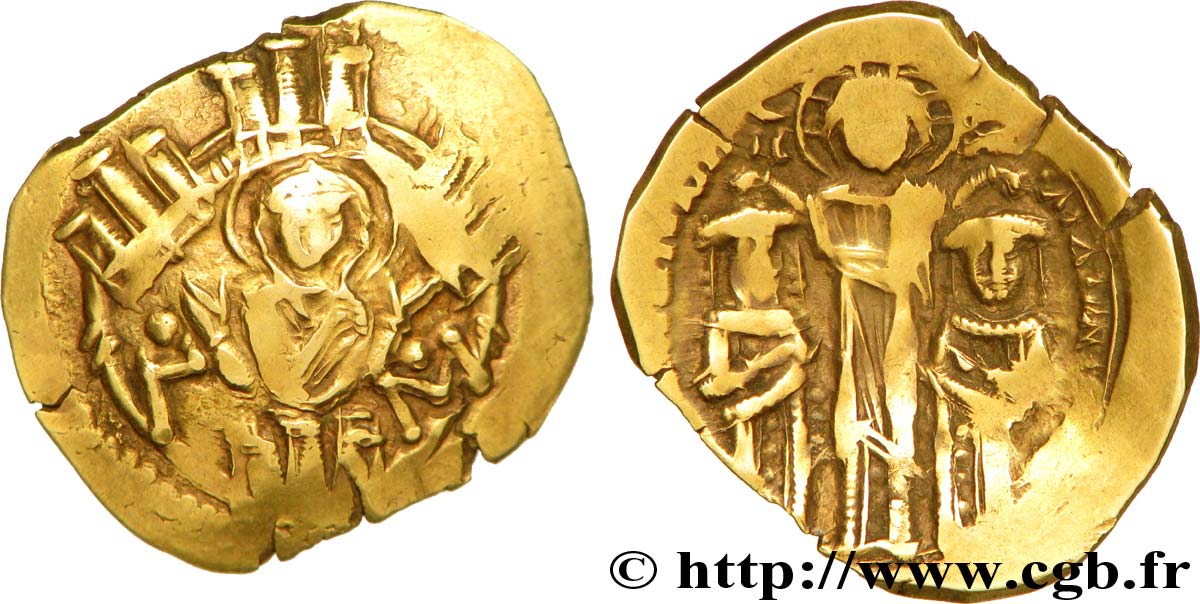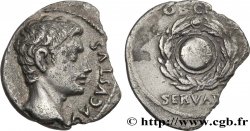v45_0900 - ANDRONICUS II und ANDRONICUS PALEOLOGUS Hyperpère
MONNAIES 45 (2010)
Startpreis : 250.00 €
Schätzung : 350.00 €
unverkauftes Los
Startpreis : 250.00 €
Schätzung : 350.00 €
unverkauftes Los
Type : Hyperpère
Datum: 1325-1334
Name der Münzstätte / Stadt : Konstantinopel
Metall : Elektrum
Durchmesser : 24,5 mm
Stempelstellung : 5 h.
Gewicht : 4,19 g.
Seltenheitsgrad : R2
Kommentare zum Erhaltungszustand:
Exemplaire sur un petit flan quadrangulaire, irrégulier, éclaté par endroits, néanmoins bien centré. Usure importante, mais parfaitement identifiable et lisible
N° im Nachschlagewerk :
Vorderseite
Titulatur der Vorderseite ANÉPIGRAPHE.
Beschreibung Vorderseite La Vierge rayonnante de face ; autour, les murailles de Constantinople ; un globule au-dessus du K et du M ; double grènetis.
Legende des Averses K - M
Rückseite
Titulatur der Rückseite IC - XC.
Beschreibung Rückseite Andronicus II à gauche et Andronicus III à droite couronnés par le Christ debout de face ; double grènetis.
Legende des Reverses : AUTOKATORES ROMAIwN
Übersetzung der Rückseite (Jésus Christ/ rois des Romains).
Kommentare
Or jaune. Flan bombé (scyphate). Variété très intéressante avec le K et le M, surmonté d’un globule. H. Berk signale que ce type doit être rendu à Andronicus II et Andronicus III Paléologue entre 1325, date à laquelle il fut associé au pouvoir par son grand-père et 1334, date de la disparition du monnayage. Le dit grand-père est décédé deux ans plus tôt, mais continue à être associé au monnayage.
Yellow gold. Domed flan (scyphate). Very interesting variety with the K and the M, surmounted by a globule. H. Berk reports that this type must be attributed to Andronicus II and Andronicus III Palaeologus between 1325, the date on which he was associated with power by his grandfather, and 1334, the date of the disappearance of coinage. The said grandfather died two years earlier, but continues to be associated with coinage
Yellow gold. Domed flan (scyphate). Very interesting variety with the K and the M, surmounted by a globule. H. Berk reports that this type must be attributed to Andronicus II and Andronicus III Palaeologus between 1325, the date on which he was associated with power by his grandfather, and 1334, the date of the disappearance of coinage. The said grandfather died two years earlier, but continues to be associated with coinage








 Berichten über einen Fehler
Berichten über einen Fehler Die Seite drucken
Die Seite drucken Teilen meiner Auswahl
Teilen meiner Auswahl Stellen Sie eine Frage
Stellen Sie eine Frage Einlieferung/Verkauf
Einlieferung/Verkauf
 Details
Details










